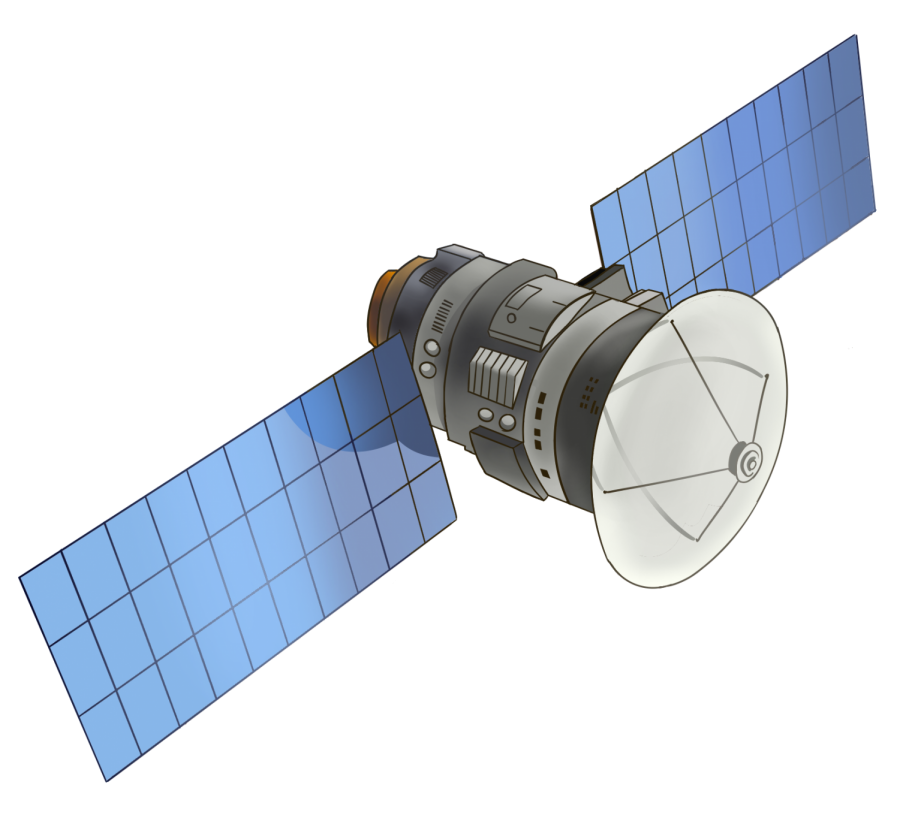Galactic Garbage
New solutions to tackle the space junk problem
Consider this repeated storyline through human history: we gain access to a new, pristine place that is full of potential, exploit that potential to its fullest extent and then leave behind heaps of trash. Unfortunately, this phenomenon seems to be happening in space, too.
Space debris is essentially space junk, a term more representative of this man-made problem. Space junk continues to orbit around the Earth at high speeds until it is de-orbited, which can be achieved by slowing it down enough for it to re-enter Earth’s atmosphere or by using an engine to propel it back into the atmosphere. Stanford sophomore and founder of Seer Tracking, Amber Yang, is an emerging pioneer in this field.
“Space junk is any defunct, man-made object. It can be as small as a paint fleck to as big as a completely dead satellite that’s orbiting in Low Earth Orbit,” Yang says. “They [pieces of space junk] can travel at speeds up to 17,500 miles an hour, and they pose really big threats to other orbiting objects in space, such as the ISS [International Space Station] and any company that is sending big assets into space.”
Most of the time, space junk in orbit comes from leftover components of rockets and satellites. Additionally, paint flecks can chip off of a spacecraft, creating more tiny pieces of debris.
Tracking Trash
Yang has been working on a program to track space debris since her sophomore year in high school. Her program differs from current tracking methods in that it uses machine learning to predict the trajectory of space junk instead of mathematical models.
“Earth’s gravity gradient [Earth’s gravity is stronger closer to its center] and solar radiation cause orbits to change really quickly, and they’re not really predictable by a mathematical model,” Yang says. “Rather than trying to understand how the Earth’s atmosphere and space are impacting orbit, I just simplified an orbit down to a few patterns that can be recognized by the artificial neural network that I’m working with.”
According to Yang, her neural net compiles and recognizes changes of the debris’ path in between each orbit around the Earth. It finds a pattern in the change to better predict its future path.
Yang is currently in the early stages of creating a startup, Seer Tracking, to support her program and make it commercially viable.
Orbital debris is actively tracked by a collaborative effort between the National Aeronautics Space Administration and the Department of Defense. All data currently used to calculate the predicted orbit of space debris is provided by sensors belonging to NASA or a Menlo Park based startup called Leo Labs.
Yang’s greatest problem right now is that she only has publicly available data on space junk locations from space-track.org to use with her neural network and not the official classified data from NASA.
“I’m not getting the classified version of the data, and the [publicly available] data hasn’t really been refined, so there’s a lot of error in it,” Yang says.
Yang has recently asked a Stanford professor with access to the classified data sets to be an adviser to her startup. Once Yang gains access to the refined data, she will use it to continue to test her neural network.
Cascading Collisions
Low Earth Orbit has a nightmare scenario. Former NASA scientist David Kessler proposed a syndrome, now called the Kessler syndrome, where he calculated the existence of a critical density point for space junk in LEO that will cause an unstoppable chain reaction of space junk collisions. In this case, the cascading collisions will not stop until there is nothing left in LEO.
Since important active satellites share the space in LEO with space junk, such a chain of collisions would be catastrophic to our global communications systems, according to the scenario proposed by the Kessler syndrome.
For active satellites and objects like the International Space Station, maneuvering out of the direct collision path, although difficult, is possible. However, for other objects, such as defunct satellites or objects floating around without active propulsion systems, a collision that generates more space junk pieces is unavoidable.
Since humans first started launching items into space, the junk has continued to increase steadily. According to NASA, as of August 2017, there are more than 21,000 pieces of debris being tracked by the DoD’s Space Surveillance Network, which only tracks objects larger than 2 inches. As of January 2018, according to a graph compiled by the European Space Agency, there has been an increase of 12,000 pieces of space debris tracked by the SSN.
As private companies and countries continue launching more satellites and spacecraft, the risk of collision between objects only increases. The importance of tracking space junk to avoid collisions has become a higher priority for these companies trying to protect their assets.
According to Yang, companies like SpaceX will look for launch windows for their rockets that reduce the risk of collisions with space debris, which is a concern that will only increase with time.
Right now, proposed solutions to the space junk problem are plentiful, though none have yet been put into practice. There are many people and companies like Amber Yang floating new proposals to deal with the problem, running tests and getting closer to solving this issue.

